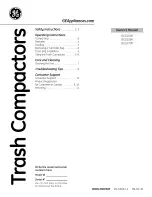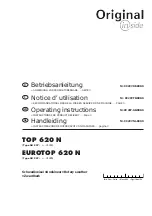
INTRODUCTION
Personal safety CAB AIR CONDITIONING SYSTEM
SAFETY REGULATIONS
• The refrigerant must be handled with great care in order to avoid personal injury; always use safety goggles and
gloves.
• Liquid refrigerant can cause freezing of the skin and serious damage to the eyes, sometimes resulting in permanent
blindness.
• Keep the refrigerant container away from heat sources. Heat will cause an increase in pressure of the refrigerant
and could cause the container to explode.
• If refrigerant comes into contact with a naked flame or a hot metal surface it produces a toxic gas, which is danger-
ous if inhaled.
• In order to avoid accidents follow the simple precautions described below.
• The operation of emptying and charging the system must be carried out in a well-ventilated area, well away from
any naked flames.
• During the charging and emptying operations, take the necessary precautions to protect the face and above all the
eyes from accidental contact with refrigerant.
• In the event of an accident, proceed as follows:
- if refrigerant splashes into the eyes, wash immediately with a few drops of mineral oil, then wash them thoroughly
with a solution of boric acid and water (one spoonful of acid in 1/4 cup of water) and seek medical assistance
immediately.
- freezing of the skin caused by contact with liquid refrigerant may be treated by gradually warming the injured area
with cold water, followed by the application of a greasy cream. Request medical assistance.
- the air conditioning system contains a mixture of refrigerant and oil under high pressure; under no circumstances
loosen pipe fittings/unions or work on the pipes without having first drained the system.
- do not loosen or remove the compressor oil level check cap with the system pressurized.
- do not heat the refrigerant container. If the temperature exceeds
50 °C
(
122.00 °F
) the pressure will increase very
rapidly.
- keep the air conditioning system away from heat sources to prevent explosions as a result of an increase in
pressure in the system piping.
• When transferring refrigerant from one container to another, only use homologated liquid refrigerant containers
equipped with safety valves.
• Never fill liquid refrigerant containers over
80 %
(
80.0 %
) of their maximum capacity.
• Do not modify the settings of safety valves and the control devices.
• Never connect the recovery/recycling and evacuation/charging stations to electrical power outlets with voltages
other than those specified; do not leave the stations powered up unless they are to be used immediately.
47878246 08/06/2015
5









































